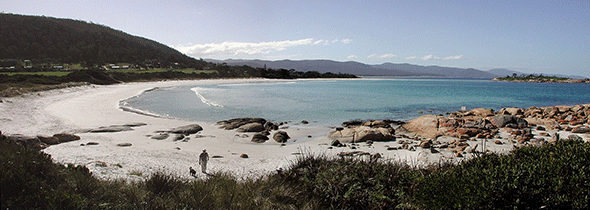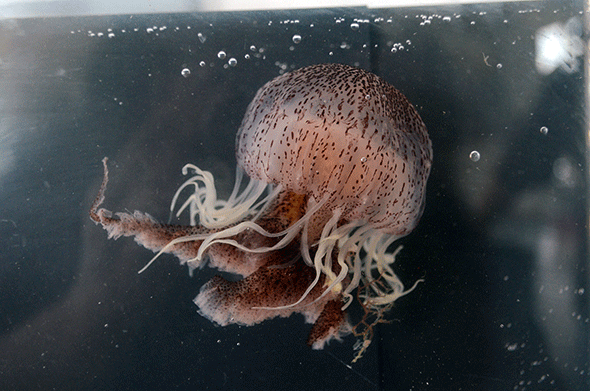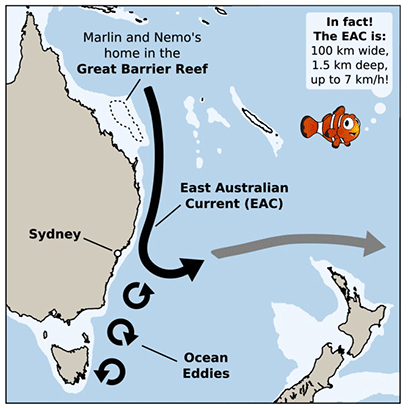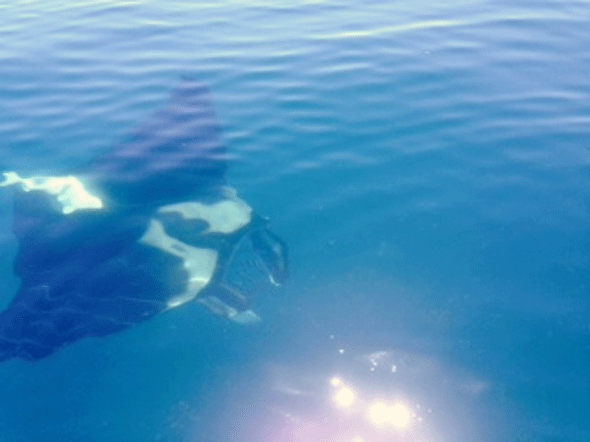
|
Published: 16 July 2012
More reserves, less seaweed for coral reef health
New research based on DNA-fingerprinting provides conclusive evidence that no-take protected areas can help restock exploited fish populations on neighbouring reefs. The findings were revealed at the recent’s International Coral Reef Symposium in Cairns.

|
|
More proof has emerged that even small areas of coral reef reserves can protect fish stocks. Credit:
Geroge Roff/CoECRS
|
The research is expected to help resolve a long-running debate worldwide about whether areas closed to all forms of fishing help replenish fish numbers outside marine protected areas (MPAs).
‘Using DNA fingerprinting technology, we now can clearly show that the benefits of MPAs spread beyond reserve boundaries, providing a “baby bonus” to fisheries,’ said Dr Geoff Jones, from the ARC Centre of Excellence for Coral Reef Studies (CoECRS) and James Cook University, who was behind the study, published in Current Biology.
Research was carried out in the Keppel Island group on Australia’s Great Barrier Reef by scientists from the ARC Centre of Excellence for Coral Reef Studies (CoECRS), in conjunction with other leading research institutions.
‘The implications for local fishing communities around the world are huge,’ said Dr Leanne Fernandes from Earth to Ocean, Australia. ‘Fishermen need to know for sure it will work.’
Dr Fernandes said that finding that MPAs can be effective on small scales has implications worldwide. For many communities, particularly in the developing world that depend on small areas of reef for food and income, there are limited options for closing areas to fishing.
‘The MPAs weren’t tens of kilometres across. Some were about two kilometres cross or even 800 metres across, and still worked,’ she said.
‘This is great news for local fishing communities around the world because protecting areas about this size might be possible for them; protecting really big areas is just too hard.’
Using DNA samples, the team of scientists tracked dispersal pathways of juvenile coral trout and stripey snappers larvae from MPAs in the Keppel island group. They found that six marine reserves, which cover only 28 per cent of the total reef area of the Keppels, generated 50 per cent of the total juvenile fish, both inside and outside of the reserves.
In other research announced at the conference, Dr George Roff and Professor Peter Mumby from CoECRS and the University of Queensland found that coral reefs in the Indo-Pacific region, including the Great Barrier Reef, recover faster from major stresses than their Caribbean counterparts.
‘The main reason that Indo-Pacific reefs are more resilient is they have less seaweed than the Caribbean Sea,’ Dr Roff says.
‘Seaweed and corals are age-old competitors in the battle for space. When seaweed growth rates are lower, such as the Indo-Pacific region, the reefs recover faster from setbacks. This provides coral with a competitive advantage over seaweed, and our study suggests that these reefs would have to be heavily degraded for seaweeds to take over.
‘This doesn’t mean that we can be complacent – reefs around the world are still heavily threatened by climate change and human activities,’ he says. ‘What it indicates is Indo-Pacific reefs will respond better to protection, and steps we take to keep them healthy have a better chance of succeeding.’
The study, published in Trends in Ecology and Evolution includes survey data from the Indo-Pacific region and Caribbean reefs from 1965 to 2010.
The researchers also found that seaweeds in Indo-Pacific region bloom four times more slowly than those in the Caribbean.
‘We’re not sure why this happens, but a plausible theory is that Caribbean waters are highly enriched in iron,’ they say. ‘For thousands of years, the Caribbean Sea has received dusts that blow across the Atlantic from the Sahara, and the dust contains iron – an essential element for algae to grow.
‘Another factor that protects these reefs is the abundance of herbivorous fish, such as surgeon and parrotfish that treat seaweed as a delicacy. The Indo-Pacific region has a lot of these fishes.
Source: CoECRS






